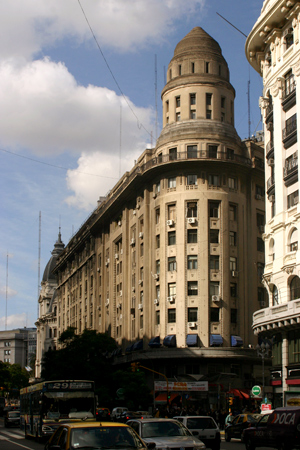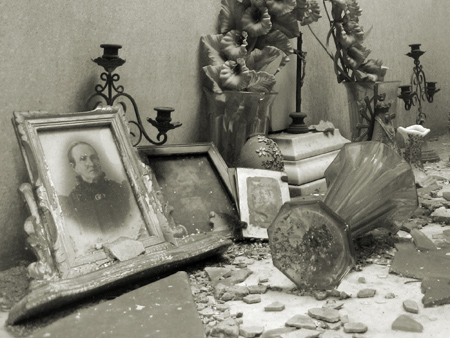
Documenting Recoleta Cemetery in Buenos Aires since 2007
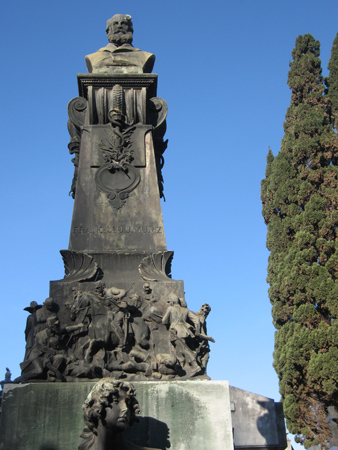
Born in 1795 in what are now the northern suburbs of Buenos Aires, Francisco Javier Muñiz dedicated his life to serving Argentina & became one of its first internationally acclaimed scientists.
Muñiz was only 12 years old when the British invaded for the second time in 1807. Although technically too young to fight, he defended the city & received a bullet wound in his left leg… this seemed to foreshadow a lifelong involvement with the military. He opted to study medicine at the age of 19 when Cosme Argerich opened the Instituto Médico-Militar in 1814 to train surgeons for military service. Muñiz remained under the tutelage of Argerich until transferring to the medical school at the newly-created University of Buenos Aires in 1822.
His first major assignment came under Coronel Juan Lavalle in early campaigns to take territory from the indigenous population. Muñiz did more than lead the medical unit; he studied customs of the indigenous people & made his first forays in natural history. The 1826 war with Brazil took Muñiz to foreign lands where he was ordered by General Alvear to accompany Lavalle’s troops once again. Lavalle took a bullet in the leg, & Muñiz was fortunately there to save him. Returning to Argentina, Muñiz received multiple honors.
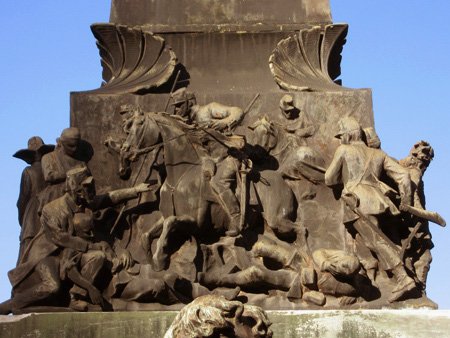
In 1828 Muñiz married & settled down in Luján, just west of Buenos Aires. Better for his health & given the opportunity to engage in scientific study, Muñiz put to practice everything he had learned while on the battlefield. His most significant contribution to Argentina was being the first to use cowpox serum as a vaccination against smallpox. In fact, Muñiz experimented at the same time as Edward Jenner… his results granted Muñiz membership in the Royal Jennerian Society.
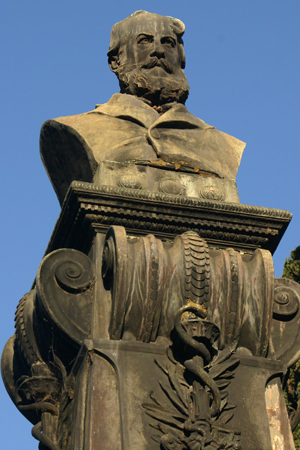
Living in Luján also gave Muñiz time to pursue his other great interest: paleontology. During his first service with Lavalle, Muñiz discovered remains of a glyptodont… the first ever recovered. A 10,000 year-old version of today’s armadillo, glyptodonts resembled a mix between a beaver & a turtle & some were as big as a Volkswagen Beetle. Similar fossils have been uncovered in Buenos Aires while building new subway stations. Displays can be found on the D Line (Juramento) & on the B Line (Tronador):
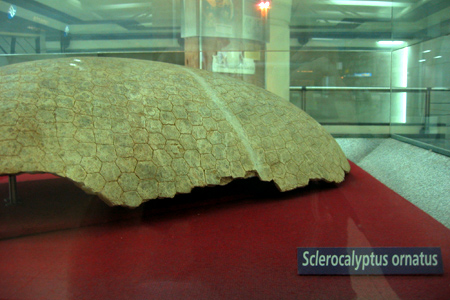
Unfortunately Muñiz did not publicly document his discovery & a French explorer 13 years later took credit for finding a new species. Undeterred, Muñiz received praise for sending 11 boxes of fossil specimens to Paris & even corresponded occasionally with Charles Darwin. Darwin wrote to Muñiz in 1847:
Your pamphlet on the scarlet fever I will present to the Royal College of Surgeons. I cannot adequately say how much I admire your continued zeal, situated as you are without means of pursuing your scientific studies and without people to sympathise with you, for the advancement of natural history; I trust that the pleasure of your pursuits affords you some reward for your exertions.
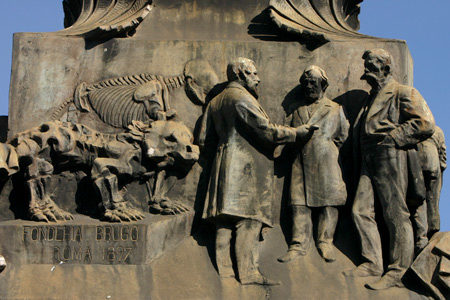
Muñiz eventually returned to Buenos Aires where he directed the medical school & served as a member in both houses of Congress until the start of the War of the Triple Alliance. Even though he was 70 years old, Muñiz offered to go to the front lines. When refused, he disguised himself as a peasant, took surgical equipment & went anyway. Muñiz remained in northern Argentina fighting a cholera epidemic until his wife passed away in 1868.
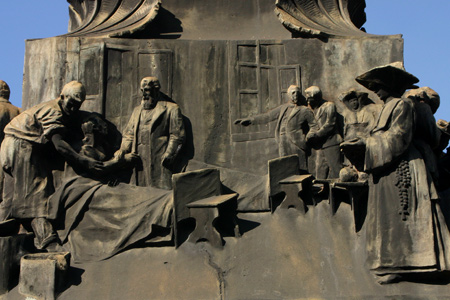
Returning once again to Buenos Aires, Muñiz officially retired but decided to come to the rescue once again when a massive outbreak of yellow fever hit the city in 1871. Catching yellow fever himself, Muñiz became one of the 14,000 casualties. After his death, the private collection of Muñiz became the foundation of the Museum of Natural Sciences located in Parque Centenario in the neighborhood of Caballito:
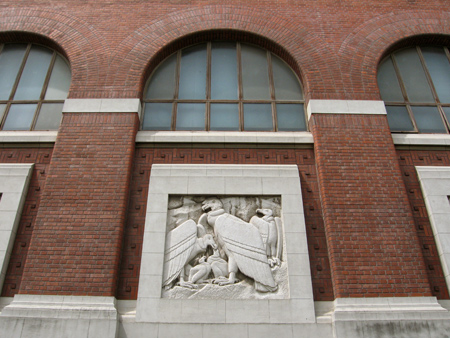
The crypt became a National Historic Monument in 1946. The enormous sculpture of a woman holding the rod of Asclepius in one hand & a sword in the other (medicine + military) was Ettore Ximenez—the same Roman sculptor responsible for Manuel Belgrano’s tomb in the patio of the Iglesia de Santo Domingo:
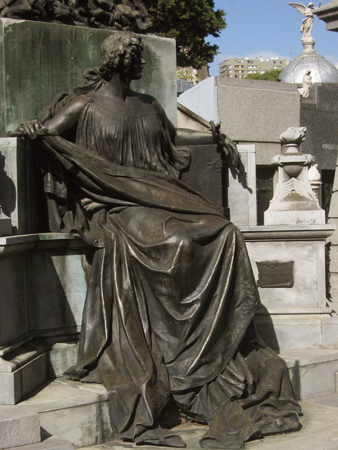
One more reason to look inside family vaults… several contain Art Nouveau vases similar to the one below. With all the damage due to neglect & the passage of time, it’s amazing that any of these have survived:
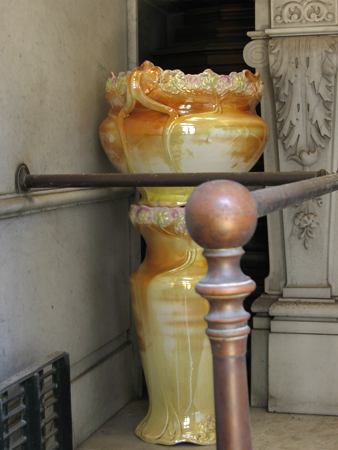
Like Art Nouveau? Learn about the architects of the era, their individual styles & what makes Art Nouveau in Buenos Aires so unique with a 33-page guide from our sister site, Endless Mile.
Leave a Comment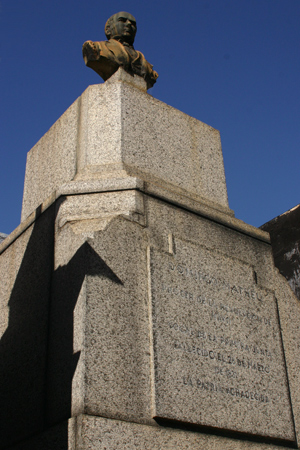
Born near Barcelona in 1765, Matheu piloted vessels in his youth after training in the Spanish Navy. He later formed a partnership with his brother after obtaining permission from the crown to engage in colonial trade. It was the start of a venture which would change his life. Matheu permanently moved to Buenos Aires in 1793 after several trips to the area.
As one of the major businessmen in city, Matheu also became influential in politics. He used his military training to defend Buenos Aires against the British during the 1806 & 1807 invasions & was one of the most involved citizens during the May Revolution against Spain.
Whether Matheu identified strongly with his new home or was mainly considering business opportunities is unclear, but he effectively betrayed his homeland by becoming a member of the Primera Junta in 1810 at the age of 44. During the absence of the President while on a trip to reorganize the Northern Army, Matheu made decisions on his behalf. Although not officially named President of the Primera Junta, Matheu ruled the new nation for several months.
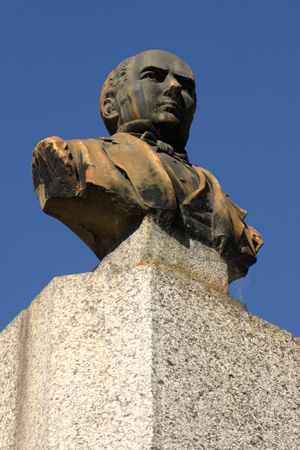
The participation of Matheu in the early days of Argentina is often hidden behind more recognized names such as Moreno, Saavedra, & Belgrano. Besides performing civic duties, Matheu’s most important contribution during that time was financial. Wealthy & generous, Matheu helped fund the creation of expeditions which eventually persuaded regions of modern-day Uruguay, Paraguay & Bolivia to join the independence movement.
After the dissolution of the Junta in 1811, Matheu donated additional funds for the army & manufactured rifles for Argentina during most of the war with Spain. He passed away in 1831 & was buried in an oddly off-center spot in Recoleta Cemetery. Barely visible these days, the simple inscription reads:
Domingo Matheu
Procer de la Revolución de Mayo
Vocal de la Primera Junta
Fallecido el 28 de marzo de 1831
La Patria agradecida
The tomb became a National Historic Monument in 1946.
Leave a CommentIn post #045, the original owners of the spectacular Art Deco/Neo-Byzantine vault pictured below had not been confirmed. Removed long ago, their family name has been cited differently in every book about the cemetery, with DeFerrari or Del Ferrari being the most common:
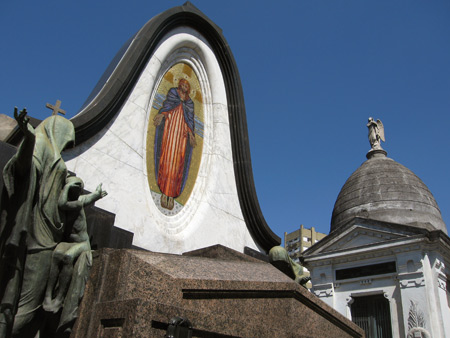
Thanks to Alejandro Machado & his obsession with Buenos Aires architecture, the family name has been verified as Defferari. Machado found the following photos in a January 1925 edition of a trade magazine titled “El Arquitecto.” Zooming in, the family name is fuzzy but certainly legible. There were a couple of interior photos published as well:
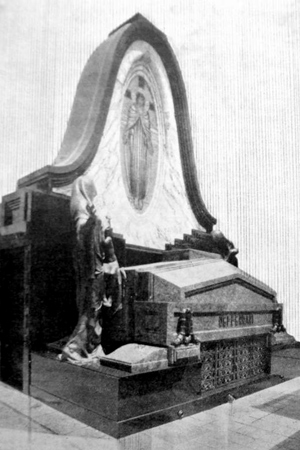

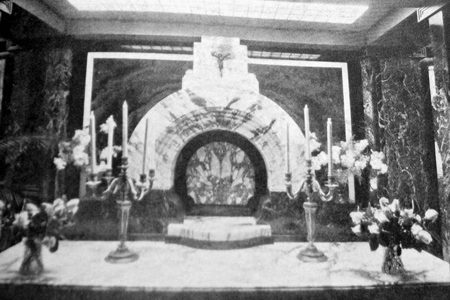
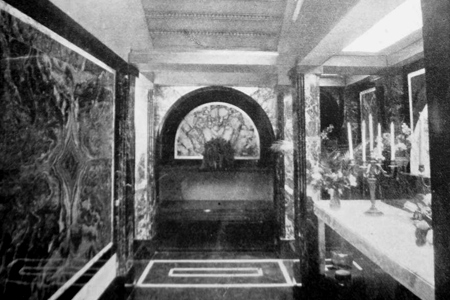
Even more exciting is the discovery of the identity of the architect… another bit of lost architectural heritage recovered by Machado. Alejandro Virasoro became the most important Art Deco architect in Buenos Aires with dozens of masterpieces in the city & founded a firm which still exists today. None of Virasoro’s buildings have the same Neo-Byzantine style of his vault in Recoleta Cemetery, but they are equally impressive… like this telescopic dome on Diagonal Norte:
